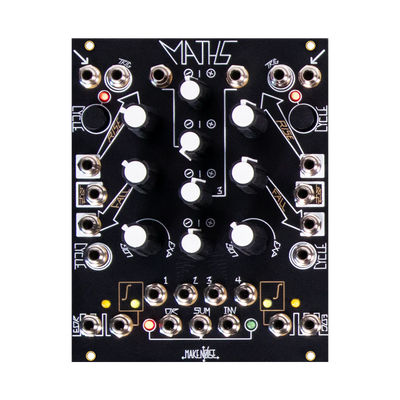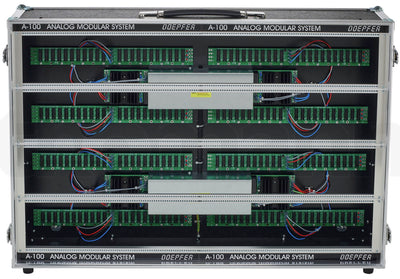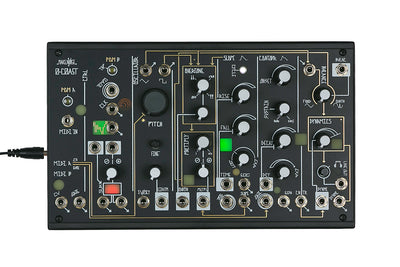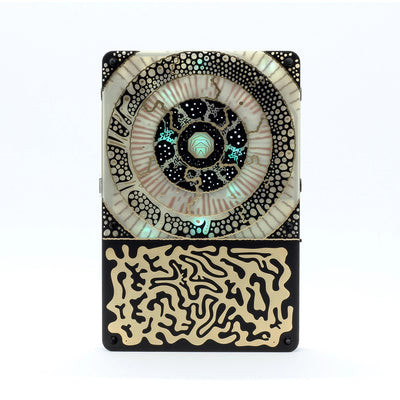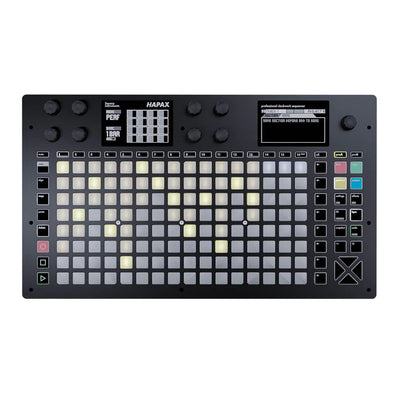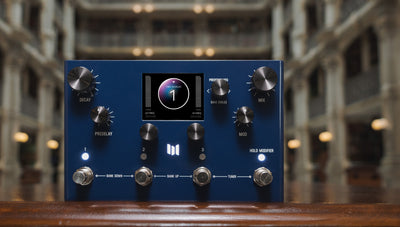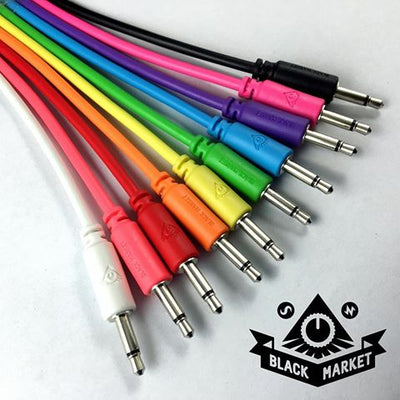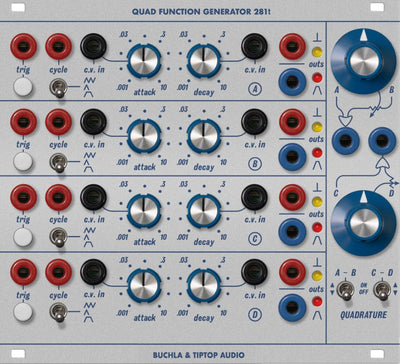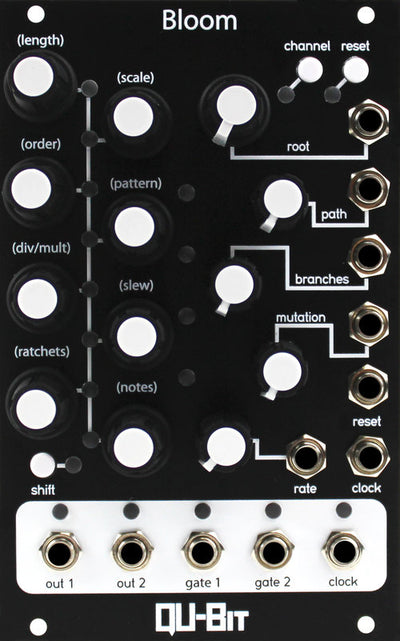Super 6 Introduction
The Super 6 is a 12-voice polyphonic, Binaural Analog-Hybrid Synthesizer. A harmonious marriage of state of the art FPGA digital hardware oscillators and Voltage Controlled Analog technology. It is flexible, immediate, powerful and refined with a gorgeous analog tone. Rich and evolving textures are easily teased from the unique Super-Wavetable core and can be shaped and manipulated with the binaural analog signal path and flexible modulation. Robust, compact and inviting to pick up and play with smooth, solid and responsive controls throughout,
it cries out to be played.
Short Form Specification
- 12-Voice Polyphonic Analog-Hybrid Synthesizer
- 4 Octave Fatar Keyboard with Velocity and Aftertouch, Expression and Sustain
- Binaural Analog Signal Path for Stereo Movement and Spatial Effects
- 7-core Super-Wavetable Main Oscillator with Waveform Download
- DDS Oscillator 2 with FM, Sync, Sub Oscillator and X-Fade Modes
- Flexible Hybrid FPGA & Analog Voice Architecture
- Robustly Built with Solid, Playable Controls
- Multi-purpose Flexible LFOs, Envelopes & Modulation Matrix
- Arpeggiator & Step Sequencer
- External Audio Input with Audio Trigger
- Dual Stereo 24-bit Digital Effects
Full Specification
Oscillators
Two Wavetable FPGA-based Direct Digital Synthesiser Oscillators per voice.
DDS1 (Direct Digital Synthesizer)
FPGA Based Super-Wavetable Oscillator Core sampled at 40MHz with Centroid-Oscillator and 6 sister oscillators dynamically detuned & de-phased in the stereo field
Sine, Saw tooth, Squarewave, Triangle, Noise
16 Wavetables that can be user-defined
Range adjustable from 2’ to 64’
DDS2
FPGA Based Wavetable Oscillator Core sampled at 40MHz
Sinewave, Sawtooth,, Square, Triangle, Noise and Pulse Waveforms
Hard-Sync to DDS1
Crossfade with DDS1 with adjustable split-point on the keyboard
LFO Mode
Sub-Oscillator Mode Active when in LFO Mode
Variable Pulse Width and PWM
DDS Modulator
LFO and Envelope Control of DDS1 & DDS2 Pitch
Selectable ½ Super or Full Super Mode for DDS1
Variable Detune Control For Super Waves and Variable Pulse Width control for selected Standard Waves
LFO and or ENV1 can modulate the depth of Detune for the Super-Waves and the Pulse Width for the standard waves
DDS2 to DDS1 Cross Modulation for Deep FM Sounds
Audio Input
Stereo Audio input that can be fed through the 12 Analog Filters and the effects section
Audio to Gate Trigger with variable-gain input stage
LFO1
Main LFO with rate adjustable from 0.05Hz to 20kHz in Low and High frequency modes
One LFO per-voice implementation
Left - Right Phase Control for Stereo Effects and Harnessing The Binaural Sound Engine
One-Shot Mode for Envelope Duties
Keyboard Tracking Mode for FM sounds
LFO1 can be mapped through the DDS1 or DDS2 Audio path in either Fixed or Tracking modes for use as a Drone or Third-Oscillator
Free-Running, or Reset on note press or Beginning of Bar for Sequencer/Arpeggiator
Mixer
Adjusts Mix-Level of DDS1 and DDS2 Audio Paths
When in Oscillator X-Fade mode, adjusts Split-Point on Keyboard
Voltage Controlled Filter
Analogue 4 Pole Low-Pass Self-Resonant Filter
Two Levels of Overdrive
High-Pass Filter with Fixed Frequency or Linked to Low Pass Filter for BandPass response
Selectable Keyboard Tracking with Filter Autotune For Accurate Keyboard Tracking
Modulation by ENV1 &/or ENV2, LFO1 and DDS2
Voltage Controlled Amplifier
Analogue VCA with Selectable Fixed or Variable Envelope (ENV2)
Dynamics Control For Velocity Sensitivity
Modulation By LFO1
Envelopes
ENV1 Invertible Hold-Attack-Decay-Sustain-Release, Multiple Destinations
Looping Mode Selectable Keyboard-Tracking for LFO and FM Duties
ENV2 Attack-Decay-Sustain-Release, Multiple Destinations
MPE MIDI Compliance with mapping to Press and Release Velocity, Bend, Poly Pressure and Expression
Modulation Matrix
Intuitive Modulation Matrix For Second-Tier Modulation Functions
LEDs give clear feedback on assignment Depths
20x Audio Rate Oversampling Computation
Arpeggiator-Sequencer
MIDI Syncable Multimode arpeggiator with Smart-Hold
1-4 Octave Range selectable for Arpeggiator
MIDI Syncable 64 - Step Sequencer with Programmable Note, Rest, Slide and Accent Controls
LFO1 and Delay Controls CAn be Locked to Arpeggiator/Sequencer Clock
64 Sequence Memories
Effects
Dual Mode Stereo Chorus using 24-bit 192kHz processing
Syncable & Modulatable Stereo Delay with 24-bit 192kHz processing
Performance
64 User Patch Memories
Patch, Sequence & Waveform Management via simple USB ‘Memory Stick’ type interface
Easy access buttons and a Menu-Free Interface
IO Connections
MIDI In, Out and Hardware-Thru on DIN Connectors
USB For MIDI, Patch & Sequence Management and Waveform Download
Audio Input on Stereo ¼” Jacks
Expression Pedal Input. Responds to CV inputs 0-5V and routed to Modulation Matrix
Sustain Pedal Input. Accepts standard momentary footswitch
Main Output Left and Right on ¼” Jacks
High Quality Stereo Headphone Power Amplifier
Integration
Easy Disk-Access Patch & Sequence Management and Waveform Download
(Unlock Multi-timbral Mode) not on release
(Unlock Deeper Modulation Capabilities) not on release
Easy OS Upgrade
Power Supply
Universal (Worldwide) Mains AC input on IEC C14 Connector
30W Power Consumption
Binaural
The Binaural refers to the twin synthesizer signal paths. In Binaural mode, each channel ‘ear’ has a complete synthesizer voice. You can detune (and de-phase) the left and right oscillators, amplitude and filter (and indeed other parameters) relative to each-other. The effect is subtle to extreme stereo movement and an improved sense of 3D positioning relative to conventional mono signal-chains panned at the output. It has in this sense 6 “Super voices” that each use two “conventional” voices, hence “Super 6”


